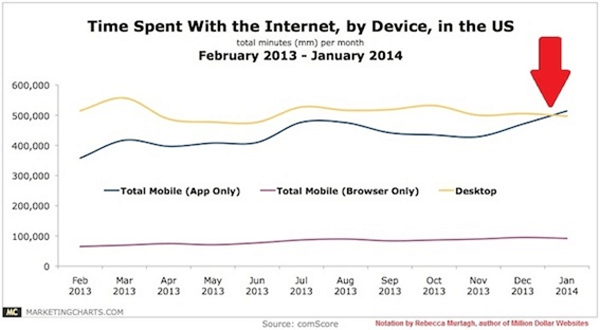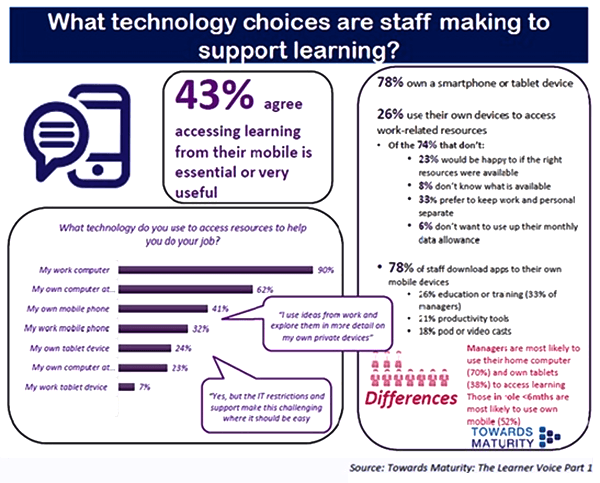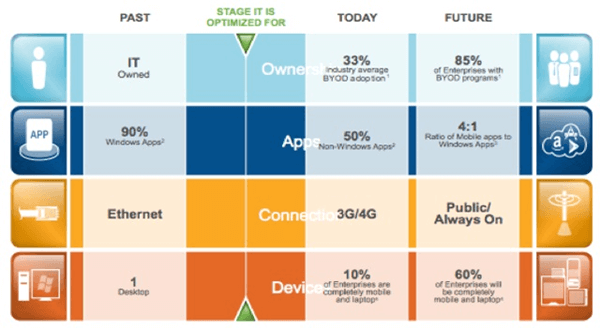Share
The amount of time we spend on the Internet is increasing and we now spend more time on the Internet from our mobile devices than from our PCs. So we should make the most of this new scenario in the field of training.
In this new context, 78% of the population owns a mobile device, tablet or smartphone, to receive information, and 43% believes that accessing learning from a mobile device is essential or very useful.
The strategy
Deciding the most suitable format
Technical adaptation of a traditional e-learning course into an m-learning course does not work. It is not enough to transform the course into HTML5 and make it responsive. M-learning is not just e-learning from a smartphone, and our attitude towards this is different. We use mobile devices in transit, very often and during short periods of time, so content must engage the user from minute one and length must be short, between 3 and 10 minutes per lesson.
We should also pay attention to format. Contents which work better in mobile devices are videos, no longer than 3 minutes, podcasts and articles as information is reduced to the minimum. No one is going to spend one hour turning slides or watching animations from their smartphone.
It is convenient to make the most out of the advantages of the devices, such as geolocation, and to have disadvantages in mind, such as low 3G coverage areas.
Deciding the aim of the training
If our goal is to train HTML5 programmers, a strategy based only on m-learning is not the most suitable. However, it could be perfect for the following purposes:
Supporting performance
The relation between training and ROI has never been so clear. For example, Electrician’s Helper allows electricians to carry out complex calculations in electrical systems when needed.
As a part of a blended or traditional programme
We all know that what we learn in an on-site training does not last in our brain longer than 2 or 3 days, especially if we do not have the opportunity to use it right after. Mobile devices are a perfect tool to propose after-class situations or for small training moments prior to on-site lessons.
Accessing information
Every piece of learning is more useful and more effective if it happens in the moment we need it – just-in-time – as our brain is more receptive. A knowledge base composed of videos or “how to” guides can be a very useful tool.
Defining the technological strategy
When defining technology, there are two different approaches:
BYOD (Bring Your Own Device)
Employees use their own devices to access information. It has important advantages such as costs reduction since the company does not have to buy devices for them. But there are other productivity-related and less visible advantages such as familiarity of employees with their device – meaning, for example, not having to change from Android to iOS – or availability – employees always carry their devices but not the company one.
COPE (corporate-owned, personally-enabled)
The company provides devices to employees who will use them to access information. Its main advantages are security and having a homogeneous devices fleet , which reduces development and support costs.
Share







One Response
[This will be a real blow to Doctrix of the Church Nancy Pelosi and the First Gay President in their attempt to set up the American Patriot Catholic Asiicsatoon.]Really? More about this attempt, please. I get the idea that for both of these people, religion isn’t a big part of their lives, so I’d be surprised if they were founding some sort of cult.